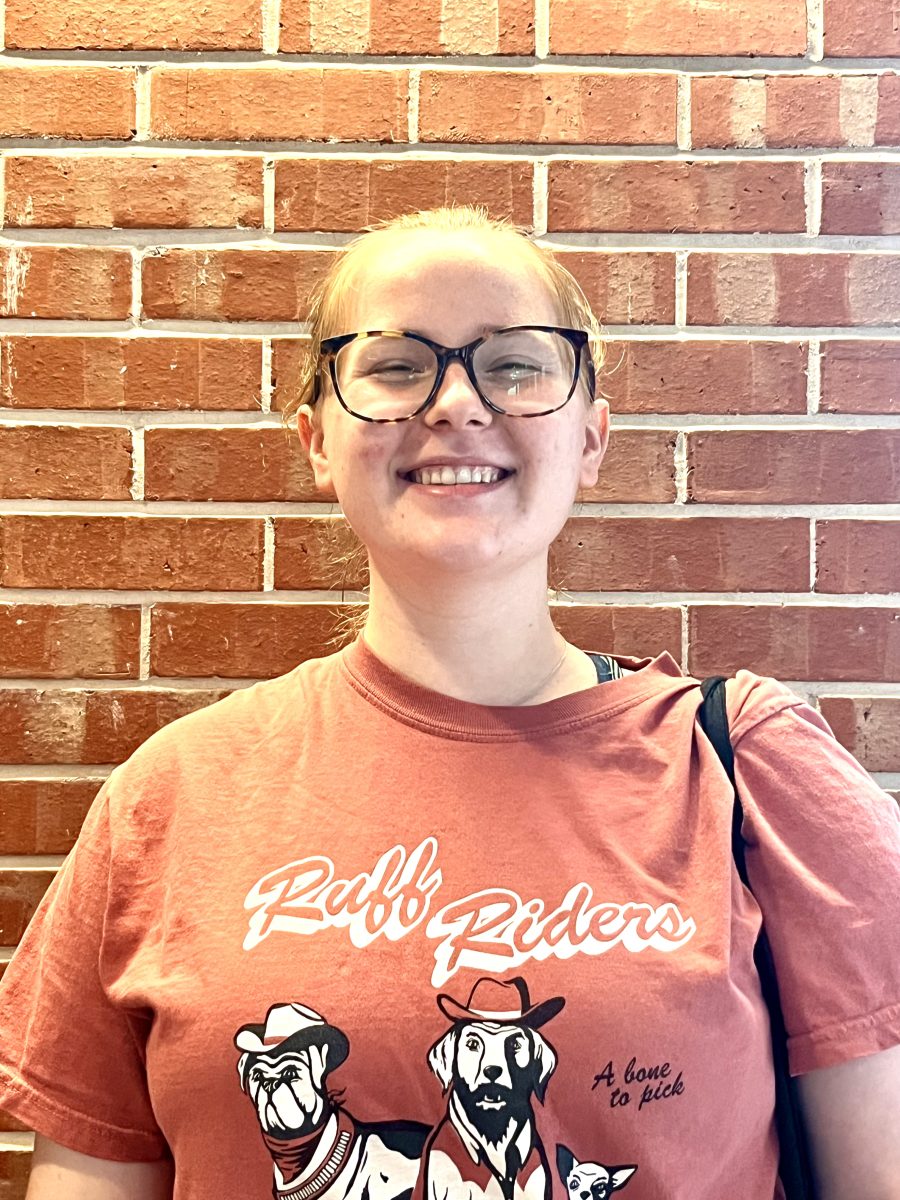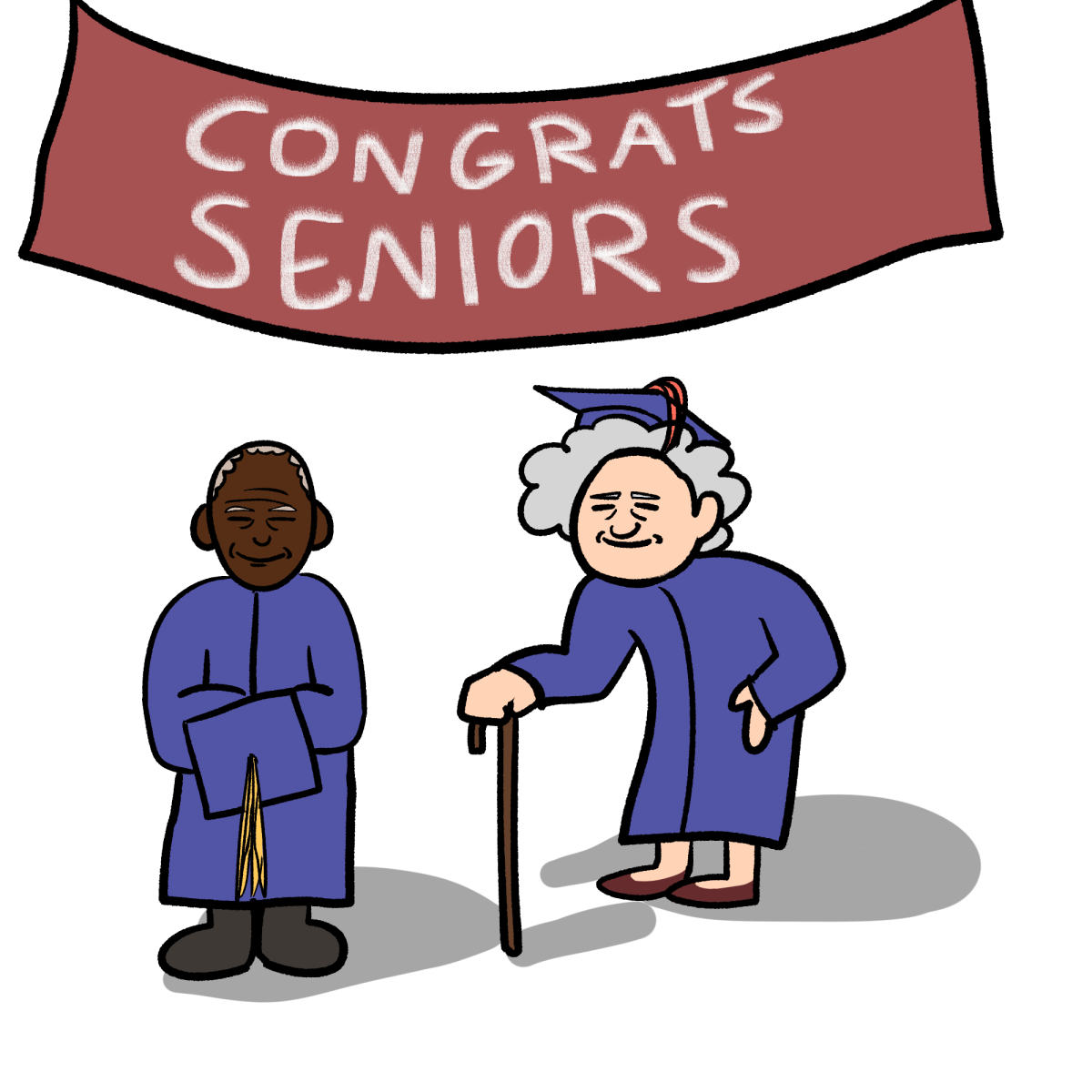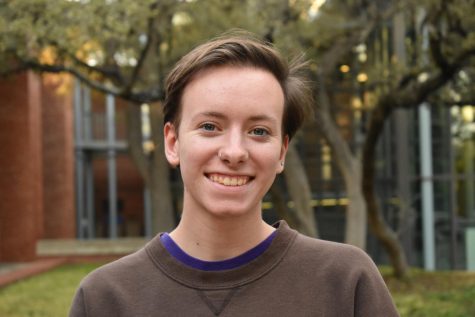Graphic by Quinn Butterfield
Each year, the best article in the academic journal “Teaching Statistics” is awarded the C. Oswald George prize. The 2019 prize-winner was Trinity’s own Luke Tunstall, director of the Quantitative Reasoning and Skills Center, for a paper he co-authored with David McCune of William Jewell College, titled “Calculated democracy — Explorations in gerrymandering.”
“I thought it was a spam message when I saw that email, and I hadn’t heard that person’s name before,” Tunstall said. “Coming right out of grad school, that was the first time I’ve ever had an award like that, so it definitely means a lot and I owe it to the co-author, certainly, for being a great partner and progressing the work along.”
The C. Oswald George prize is named after the UK statistician who helped found the UK’s Institute for Statistics. Teaching Statistics, the journal from which the winning articles are chosen, is a practitioner’s journal directed at people teaching topics involving statistics. McCune wasn’t aware of the award before receiving it either.
“I hadn’t heard of the award before, but it was extremely gratifying to win it,” McCune wrote in an email. “Like most people, I find it nice to know that my work is valued by others. I should note, though, that my small children were spectacularly indifferent to my winning this award, so I guess you can’t impress everyone.”
In their paper, Tunstall and McCune applied statistics to gerrymandering, which they defined as “the intentional changing of district boundaries to gain partisan advantage.” John Burke, visiting assistant professor in the department of political science, said that partisan gerrymandering is a “hot topic” because the practice can undermine the worth of a vote.
“The problem, of course, is if you’re a Democrat who lives in a predominantly Republican area or district, the question is, does your vote even mean anything?” Burke said. “And conversely, if you’re a Republican in a majority Democrat district, does your vote really mean anything?”
This waste of votes is called the efficiency gap. Tunstall and McCune’s paper gives example activities and explanations of how to apply statistics to gerrymandering. The efficiency gap serves as a way to quantify gerrymandering and link it into mathematics.
“The lesson itself was sort of broken up into two big parts,” Tunstall said. “One being spending a week or two learning what gerrymandering is, the different ways and techniques of doing it, and exploring what different ways are of quantifying gerrymandering. Then, we started asking the question of, ‘Using one way of quantifying gerrymandering, which is the efficiency gap, what would happen if we randomly created districts?’”
The second part of the lesson involved using infographics to show a particular state’s case. Tunstall said the paper also included sample datasets that can be used to play with district lines. According to Burke, real census data is why gerrymandering has made elections so polarizing today.
“Through computers, you can get these districts almost house-by-house,” Burke said. “And by data that’s available, you can really design these districts so that they’re not competitive.”
According to Tunstall, statistics lessons should be applied to fields outside of mathematics because that’s where data comes from. Tunstall said it’s a beautiful thing when statistics arise naturally in a given context, especially controversial topics like gerrymandering and climate change.
“Sometimes, regardless of whether one likes math or statistics, the use of statistics [can] make things seem more objective,” Tunstall said. “Regardless of who was in the class when I taught [about this], whether they were in one party or another, the use of statistics allowed us to have a level plane of what we considered fair.”
McCune agreed that approaching statistics without a strictly mathematics lens was a good way of reaching students not particularly fond of math.
“The most rewarding part of creating the paper was teaching relevant topics like gerrymandering and the efficiency gap to an audience of non-math majors,” McCune wrote. “It is rewarding for me to see these students understand why mathematics is useful in this context.”








